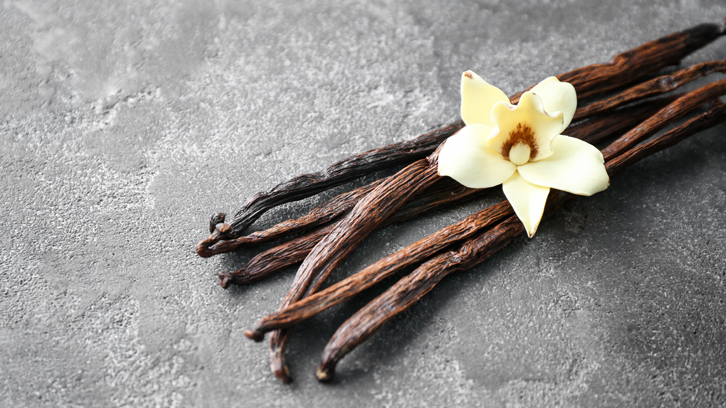It smells like vanilla! UAB develops an immobilized biocatalyst for the synthesis of vanillin

Natural vanilla is one of the most important flavours harvested in the world, with a current volume of almost 8 thousand tonnes per annum. There are around 180 aromatic compounds in vanilla, and, the one that gives its characteristic flavour is vanillin (4-hydroxy-3-methoxybenzaldehyde) which only represents 2% (w/w) of vanilla. However, agricultural production is not sufficient to supply demand, which has doubled over the past two decades. Its high price and widespread use in the food, cosmetic, and pharmaceutical industries triggered the necessity to produce it by other means.
Different ways to produce vanillin using chemical synthesis, microbial/plant cells and enzymatic biotransformation have been reported. Nevertheless, the process metrics of the biotransformation approaches are still far from being industrially implementable. Chemical synthesis is used to produce the majority of vanillin production, but it is declining in interest in many markets (chiefly in the food industry) in favour of product, produced by microorganisms, plants cells and enzymes, that can be labelled as “natural”. Furthermore, consumers are increasingly willing to pay a premium for products produced using natural means.
The Bioprocess Engineering and Applied Biocatalysis group and the Fermentation Pilot Plant of the Department of Chemical Engineering of UAB in collaboration with the Technical University of Denmark (DTU) and InnoSyn B.V. have developed a bioprocess to produce vanillin within the framework of the EU project ROBOX.
Biotransformation process uses an oxidative enzyme to carry out the synthesis of the aromatic compound from vanillyl alcohol. The bioprocess was developed and optimized by DTU and InnoSyn B.V. while the UAB has been focused in the immobilization of the enzyme in a solid support aiming to improve the stability of the enzyme and to allow the re-use of the biocatalyst. Finally, the immobilized derivative obtained at UAB was able to perform more than 5 reaction cycles with almost no decrease neither in conversion nor in yield.
This collaboration within ROBOX project has contributed doubtlessly to bring this bio-oxidative process closer to the industrial implementation.
Image 1. “The research for this work has received funding from the European Union (EU) project ROBOX (grant agreement n° 635734) under EU’s Horizon 2020 Programme Research and Innovation actions H2020-LEIT BIO-2014-1”.
Department of Chemical, Biological and Environmental Engineering
Universitat Autònoma de Barcelona
References
Reference bibliography:
- Lomascolo A, Stentelaire C, Asther M, Lesage-Meessen L. (1999). Basidiomycetes as new biotechnological tools to generate natural aromatic flavours for the food industry. Trends Biotechnol, 17(7):282-289.
- Food and Agriculure Organization-FAO site. Food and Agriculutre Organization of the United Nations. www.fao.org/faostat. Published 2018.
- Bomgardner MM. (2016). The problem with vanilla. Chemical Engineering News. https://cen.acs.org/articles/94/i36/problem-vanilla.html.
- Ramachandra Rao S, Ravishankar G. (2000). Vanilla flavour: production by conventional and biotechnological routes. J Sci Food Agric, 80(3):289-304.
- Yoon SH, Li C, Lee YM, et al. (2005). Production of vanillin from ferulic acid using recombinant strains of Escherichia coli. Biotechnol Bioprocess Eng, 10(4):378-384.
- Suresh B, Ravishankar GA. (2005). Methyl jasmonate modulated biotransformation of phenylpropanoids to vanillin related metabolites using Capsicum frutescens root cultures. Plant Physiol Biochem, 43(2):125-131.
- Furuya T, Kuroiwa M, Kino K. (2016). Biotechnological production of vanillin using immobilized enzymes. J Biotechnol, 243:25-28.


